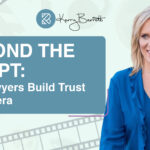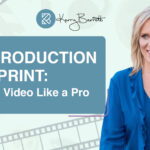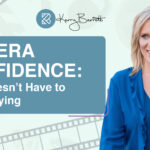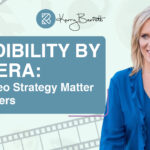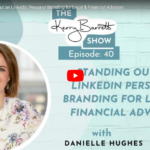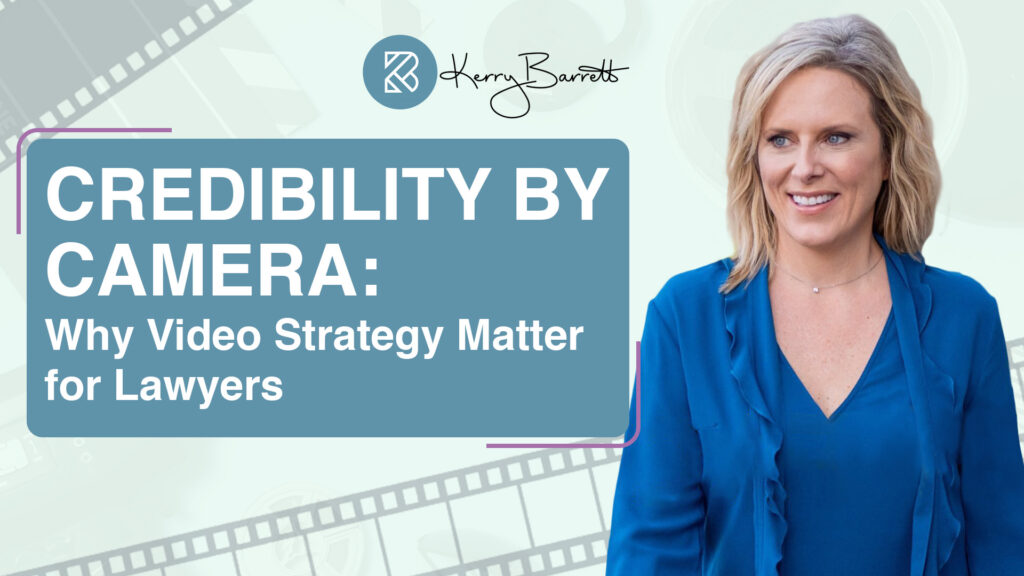
Why did you start working specifically with lawyers on their video strategy?
After leaving the broadcast world in 2019 and launching my own business in 2020, I explored various services—public speaking training, video production, voiceover work, and on-camera coaching. At first, I wasn’t sure who my primary audience was. It wasn’t until a conversation with my business coach that I realized a consistent pattern: the majority of my clients had been attorneys. These were primarily solo practitioners or small firm lawyers who needed help creating videos for platforms like YouTube, TikTok, LinkedIn, and their websites. Even though I also work with executives, doctors, and coaches, attorneys have become the focus of my work because their need for a strong, credible video presence is uniquely high—and often underserved.
If lawyers are trained communicators, why do they struggle on camera?
Lawyers are often outstanding in the courtroom or at depositions because those are environments where they understand the rules, structure, and expectations. However, being on camera is entirely different. It’s artificial—there are lights, a lens, and no human feedback in real time. That setting throws many attorneys off, especially when perfectionism kicks in. In law, one small error can undermine an entire case, and that mindset often transfers to video. But video is never perfect—even my Emmy-winning broadcasts weren’t flawless. There’s a learning curve to adjusting your communication style for the lens, and that’s where many attorneys get stuck.
Does perfection help or hurt your effectiveness on camera?
Perfection is a myth when it comes to video. What really connects is authenticity. That doesn’t mean being sloppy—it means showing up as yourself, just with a bit of polish. You want to be “you, amplified.” Over-rehearsing or over-editing to chase perfection tends to strip away what makes you relatable. The most important takeaway? You are the one thing no one else can replicate. People connect with people, not polish.
What are the most common myths lawyers believe about video?
The first myth is the need to be perfect. That’s an impossible and unnecessary standard. The second myth is that legal content is boring. It might feel mundane to the lawyer creating it, but to someone searching for legal answers—or to a potential referral partner—it’s incredibly valuable. Think of your audience as someone deeply interested in what you have to say, even if they don’t need your services today. The way you present your knowledge can be compelling, informative, and memorable.
How does on-camera presence affect trust and credibility for lawyers?
Your on-camera setup—lighting, sound, framing—matters because it visually communicates attention to detail and professionalism. When these basics are overlooked, there’s a risk of viewers (consciously or not) questioning your expertise. But the deeper challenge is how you speak and carry yourself. Most attorneys worry more about judgment than the tech. They’re afraid of looking foolish or being criticized by peers. That fear can cause them to shrink or come across as flat. Good video presence is about energy, confidence, and clarity—all of which are teachable.
Why does video sometimes make people seem less dynamic?
The camera is naturally flattening—it compresses energy. A person who is expressive and engaging in real life can appear dull or disinterested on video if they don’t account for how the medium strips away nuance. You’re dealing with hardware, software, internet connections, and editing platforms that all reduce the vibrancy of your delivery. It’s critical to intentionally boost your energy and presence on camera, even if it feels slightly exaggerated, to ensure your true enthusiasm and authority come through.
What kind of transformation have you seen from lawyers who embrace video?
One example is an AM Law 100 firm I worked with. Two partners in a practice group were launching a book and used a video strategy to boost their visibility. We did media training and produced a video series that resulted in over 500 press mentions and increased book sales year over year. More importantly, they significantly elevated how they were perceived in the marketplace. They became go-to experts for their niche, not just to clients, but to colleagues and media as well.
How much time should a lawyer plan to invest in building a video presence?
Most attorneys assume video content will take hours or be disruptive to their billable schedule. In reality, once you have a system in place, creating a video can take as little as 15–20 minutes. I recently produced and published a full LinkedIn video in just 16 minutes—everything from scripting to studio setup to editing and posting. My full program is 12 weeks long and covers pre-production, scripting, delivery, post-production, and distribution. But even a lawyer with no experience can create quality content quickly once the process is clear.
Is batching videos a good strategy for busy attorneys?
Absolutely. Batching is one of the best ways to maximize efficiency. Set up your camera and lights once, then record multiple videos in a single session. Bring a few wardrobe changes to keep things fresh. This reduces setup and breakdown time, helps you get into a flow, and allows you to build a content library for weeks or even months in advance. To batch effectively, it helps to plan with a content calendar so you know exactly what videos you need and when.
What advice do you have for a lawyer who knows they need video but feels overwhelmed?
Start now. The best time was yesterday, the next best time is today. There is still a huge opportunity for lawyers to stand out using video because the vast majority aren’t doing it—especially not consistently or strategically. With a clear process and a little support, creating video can be straightforward and incredibly impactful. It’s not just about attracting clients; it’s about building credibility, getting referrals, securing speaking engagements, and opening doors you may not even see yet.
